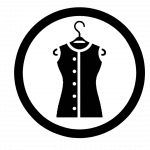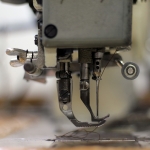Description
SOLD ‘Q2 2022
Private Label Clothing Manufacturer Caters to Creatives! – Great Business Opportunity & Investment!
Garden Grove, CA – (Orange County)
Seller Financing Available!
Zip Code: 92844
Asking Price: $350,000
Cash Flow: $120,445
Gross Revenue: $602,580
EBITDA: N/A
FF&E: N/A
Inventory: N/A
Established: 1989

Private Label Clothing Manufacturer – (Business Description)
Quality is key at this proud “Made in the USA” Private-Label clothing and accessories manufacturer.
Although the business started with the manufacturing of uniforms, which they still do today, they found a more successful and profitable niche by working with up-and-coming designers and entrepreneurs.
Customers bring ideas and company associates walk them through the process of pattern-making and textile selection and send the final product out the door with the client’s label sewn (or stamped) in.
NDA is required for CIM crafted by ProNova Partners.

Detailed Information:
- Facilities: 6,000 square-foot unit in a centrally located commercial complex.
- Competition: Competitive yet segmented marketplace allows for niche markets to thrive.
- Growth & Expansion: Develop a comprehensive marketing plan and implement with the launch of social media postings.
- Financing: If the price and deal structure are right.
- Support & Training: As needed.
- Reason for Selling: Retirement

Industry Trends & Growth:
Competitive Landscape Apparel manufacturers compete on both price and fashion. Under many supply agreements, customers can cancel orders or return unwanted inventory.
Companies with a competitive advantage are those that can successfully cater to consumer tastes while managing costs and securing beneficial contracts with clothing marketers.
Large integrated companies such as Levi Strauss and Ralph Lauren have sophisticated marketing programs to promote their brands.
Small companies can compete effectively with large ones by specializing in a particular type of clothing, such as:
- athletic wear,
- intimate apparel,
- or accessories.
The US industry is fragmented: the 50 largest companies generate less than 40% of revenue.
Because of the lower costs to manufacture apparel abroad, the US imports more clothes than it makes domestically. Imports account for about 95% of the US market.
The largest suppliers in the US are Bangladesh, China, India, Indonesia, and Vietnam.
Major export markets for US apparel manufacturers include Canada, Mexico, and the UK. Exports account for about 50% of US production.
![]() SOLD-Private Label Clothing Manufacturer – (Orange County, CA)
SOLD-Private Label Clothing Manufacturer – (Orange County, CA)